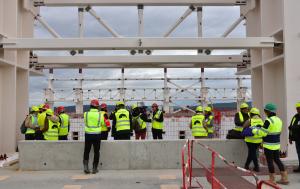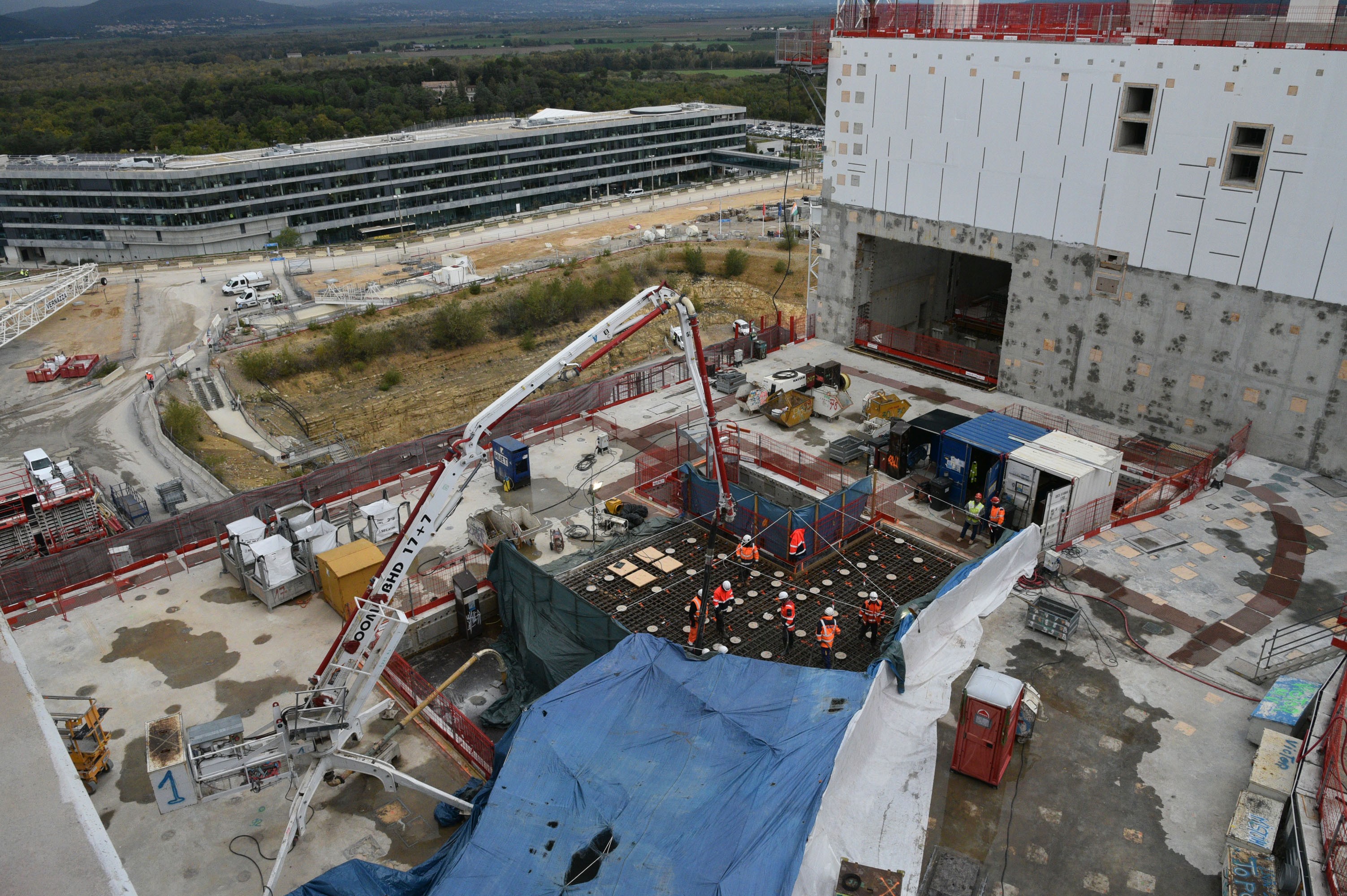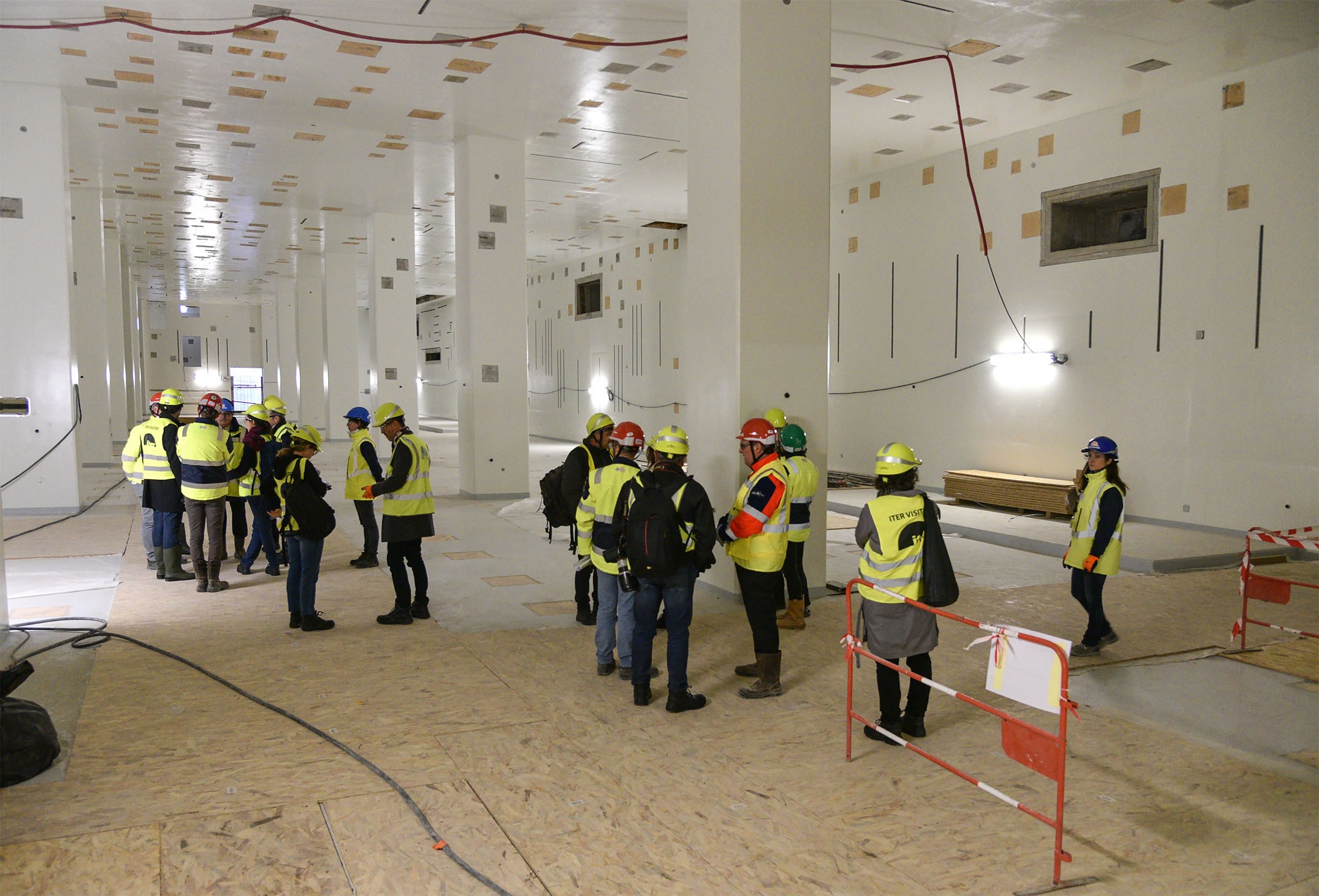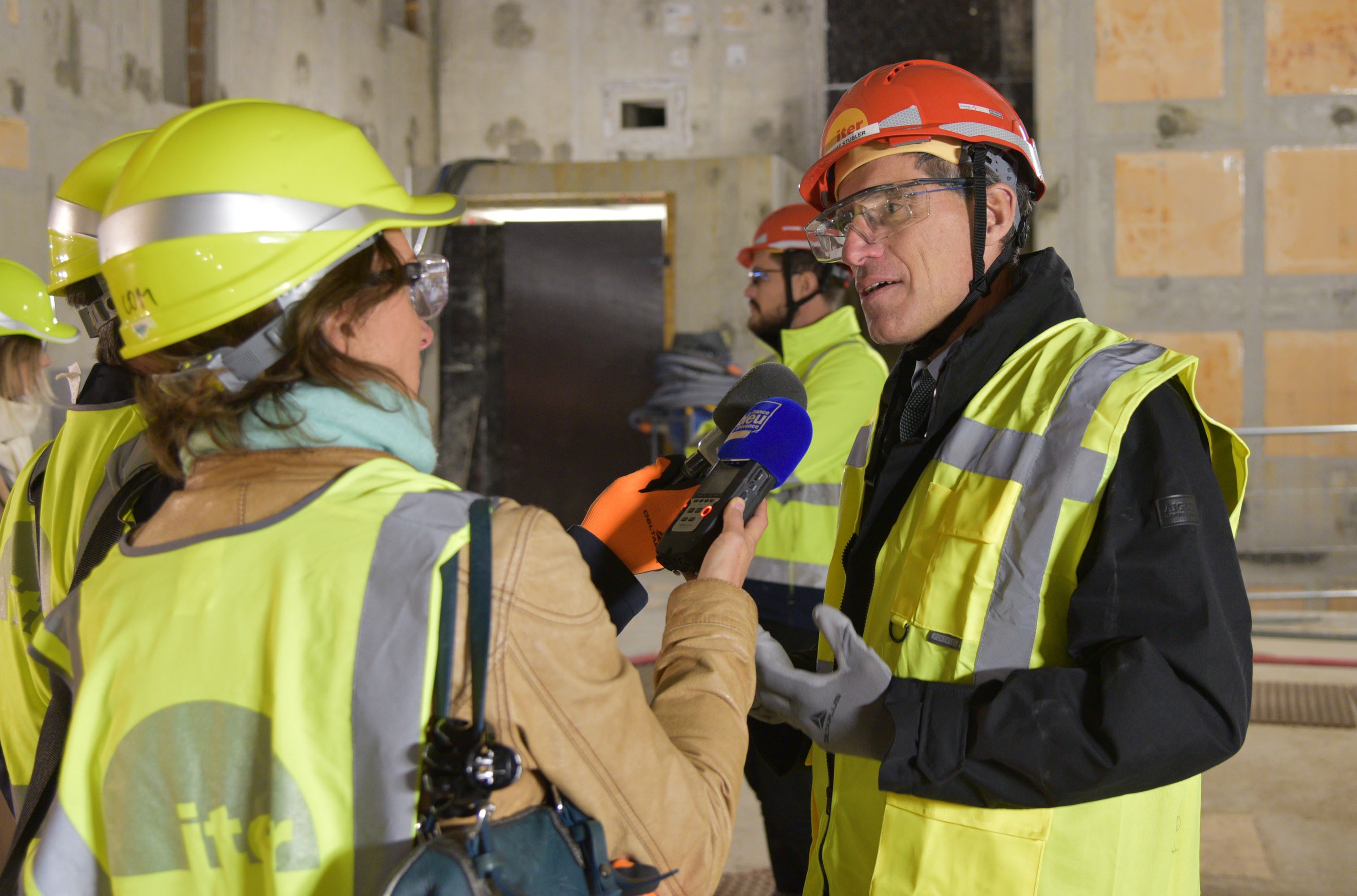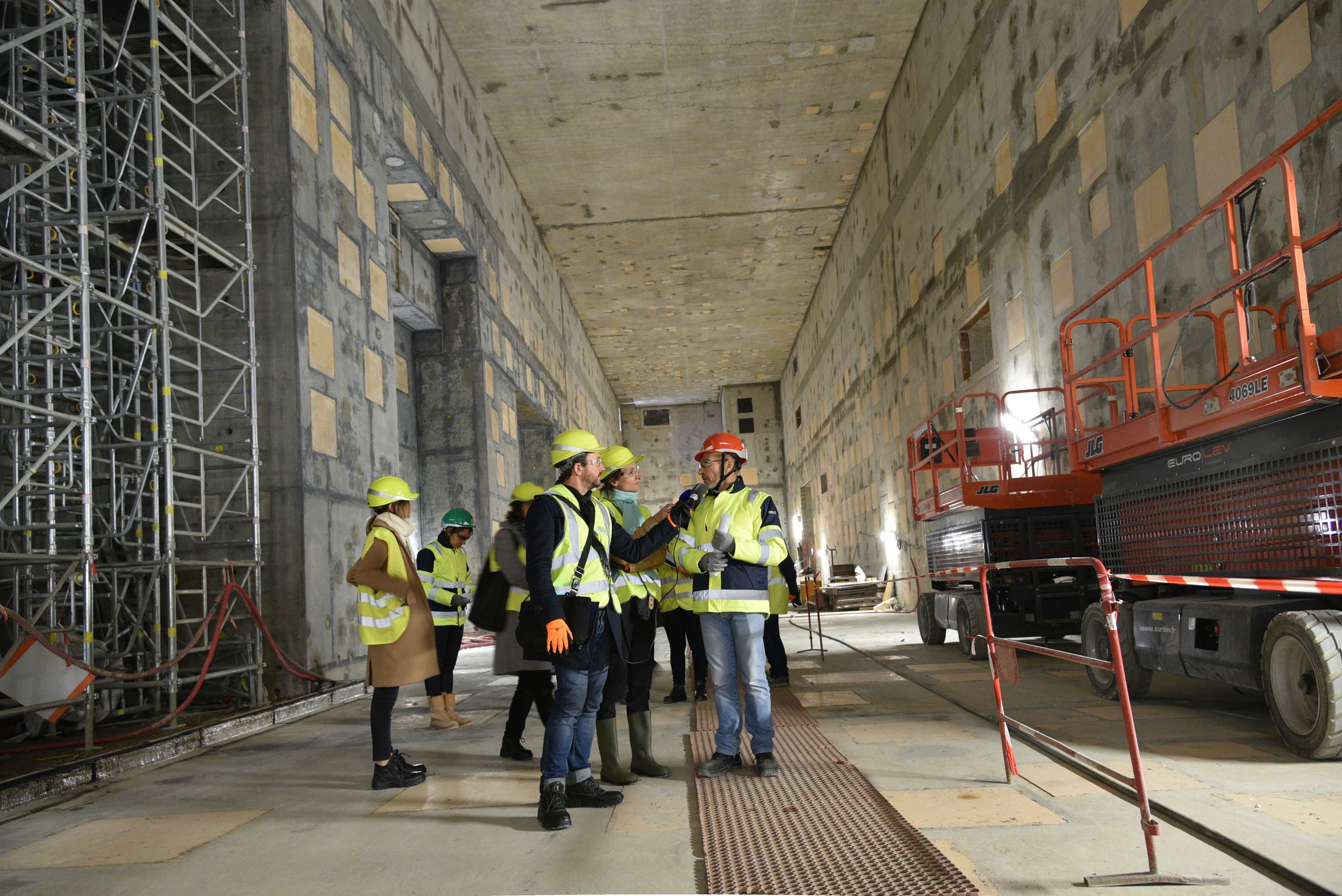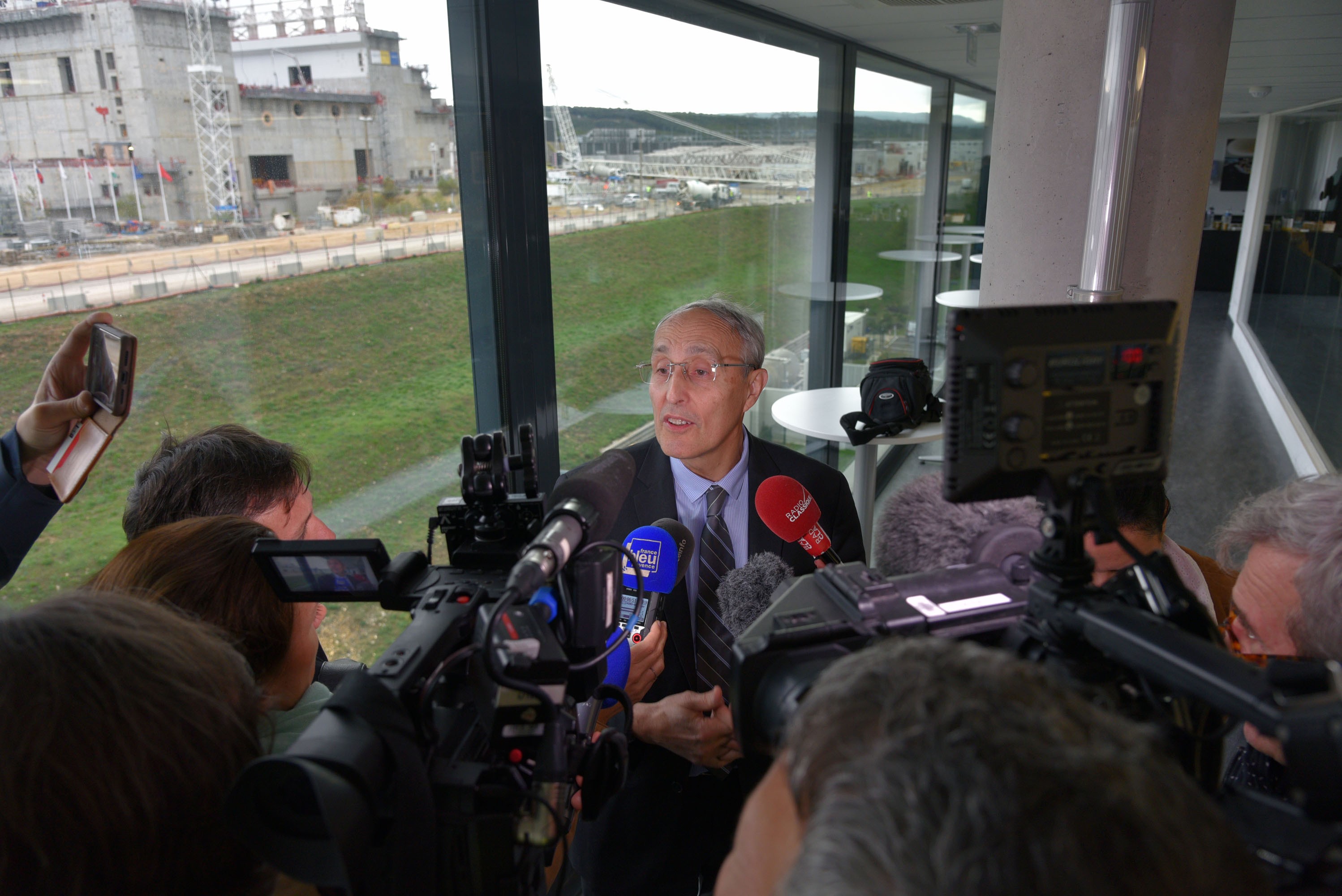Tokamak Building
Civil works completed
18 Nov 2019
The olive tree that stood for a few days at the top of the Tokamak Building marked the completion of a five-year effort by Europe and its main contractor VFR to construct the central building of the ITER facility*. On Friday 8 November, at the invitation of the leading partner in the VFR consortium, Vinci Construction, media came en masse to celebrate the achievement of this important milestone.
Speaking to the media as "a humble mason," Jérôme Stubler, president of Vinci Construction, expressed his "pride and emotion" at contributing to the realization of one of humanity's "absolute dreams."
Erecting the seven-storey Tokamak Building has required six million work hours, performed by approximately 850 workers since 2010. Some 105,000 tonnes of concrete, reinforced by approximately 20,000 tonnes of steel rebar, went into the building's construction.
For Jérôme Stubler, president of Vinci Construction, the achievement stands at the crossroads of "several beautiful stories in the fields of physics, of geopolitics and of human adventure." Speaking to the media as "a humble mason," he expressed his "pride and emotion" at contributing to "the box that will host the fusion reactor" and hasten the realization of one of humanity's "absolute dreams."
The construction process, which one of his deputies called "a furious melee, but a coordinated and cadenced one," rested on a "nimble organization" that managed to integrate the design adaptations requested by the ITER scientific teams.
Media representatives were impressed. ITER remains an abstraction until you get to see, with your own eyes, the size of the buildings and the complexity of the equipment. Passing through the Assembly Hall where the upending tool had just been delivered; climbing to the top of the Tokamak Building where tall pillars for the roof structure stretch toward the sky; standing in the depths of the Tokamak Building and peeking into the cylindrical space where the machine will be assembled ... the media was able to take the full measure of the complexity and ambition of ITER.
In the days that followed, the experience translated into enthusiastic headlines and comments in the French press (see examples here). As one French TV channel stated, ITER is indeed "the incredible reactor that aims to produce inexhaustible energy."
*The Tokamak Building is the central building of the Tokamak Complex, which also includes the Diagnostic and Tritium buildings. The VFR consortium (Vinci, Ferrovial, Razel-Bec) is the European Domestic Agency's contractor for the construction of the Tokamak Complex and eight other structures of the ITER scientific facility.

